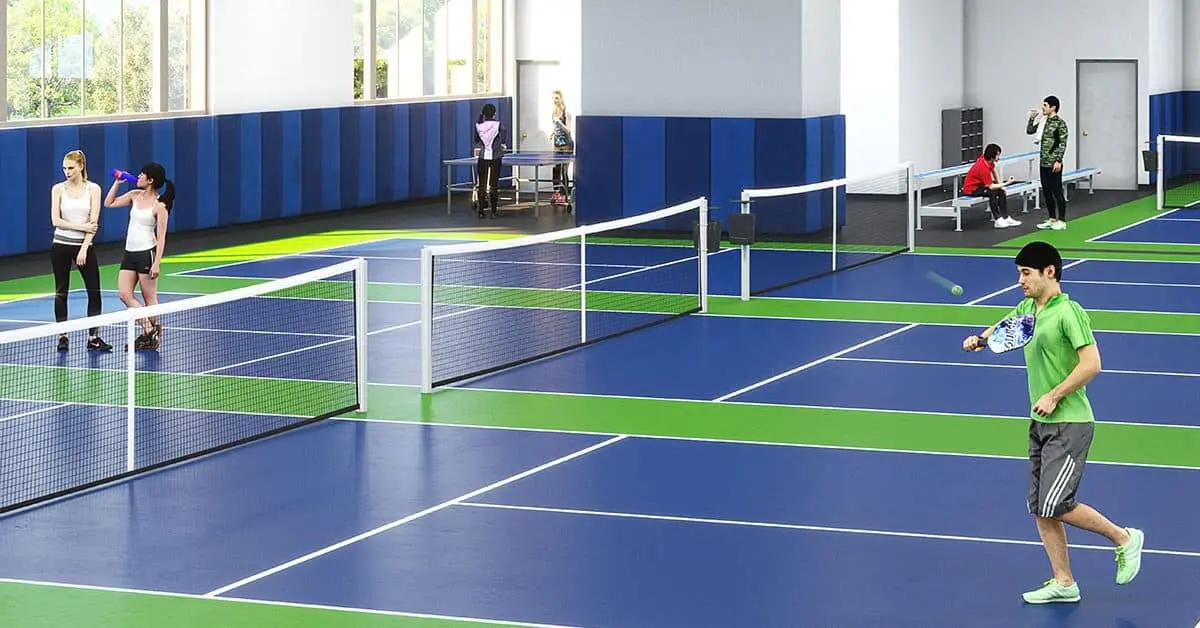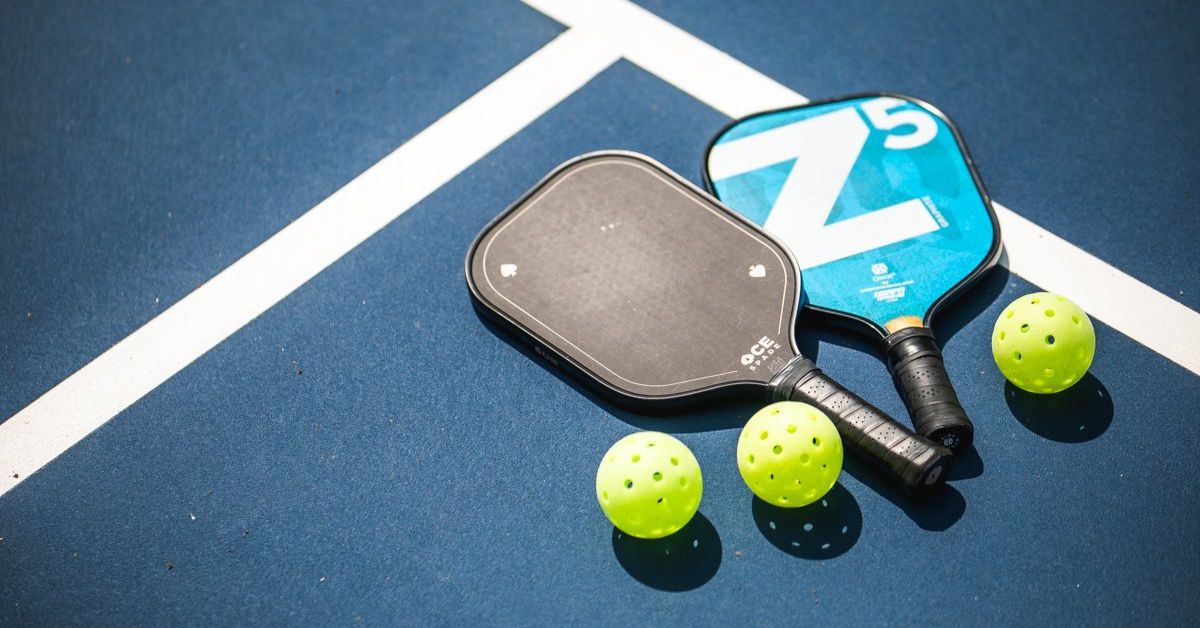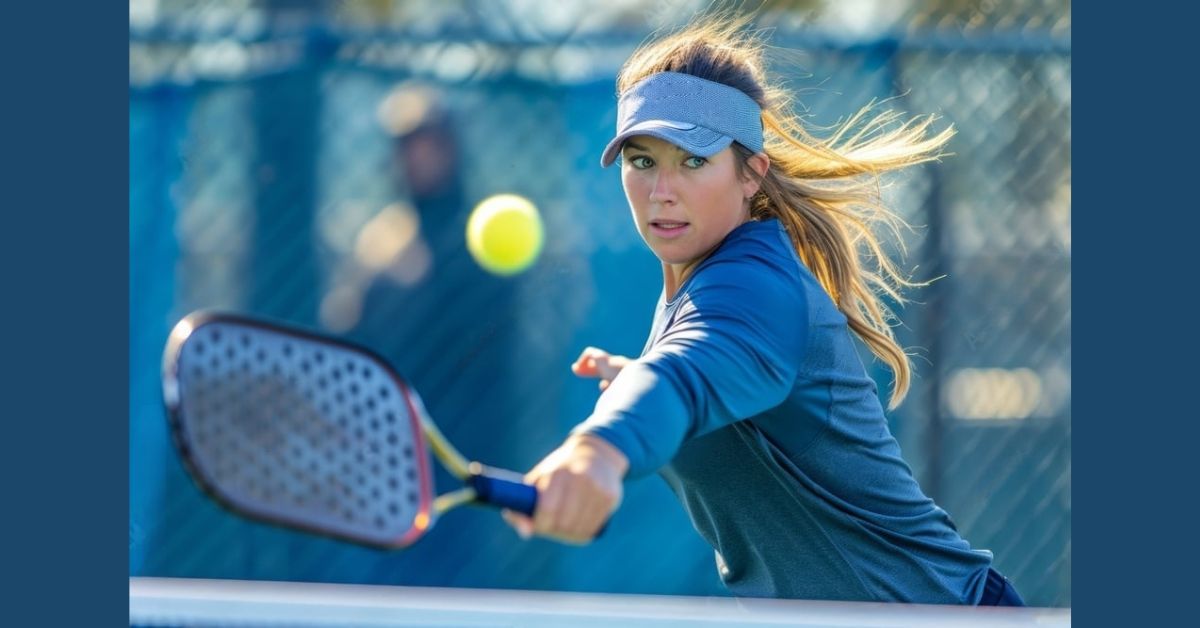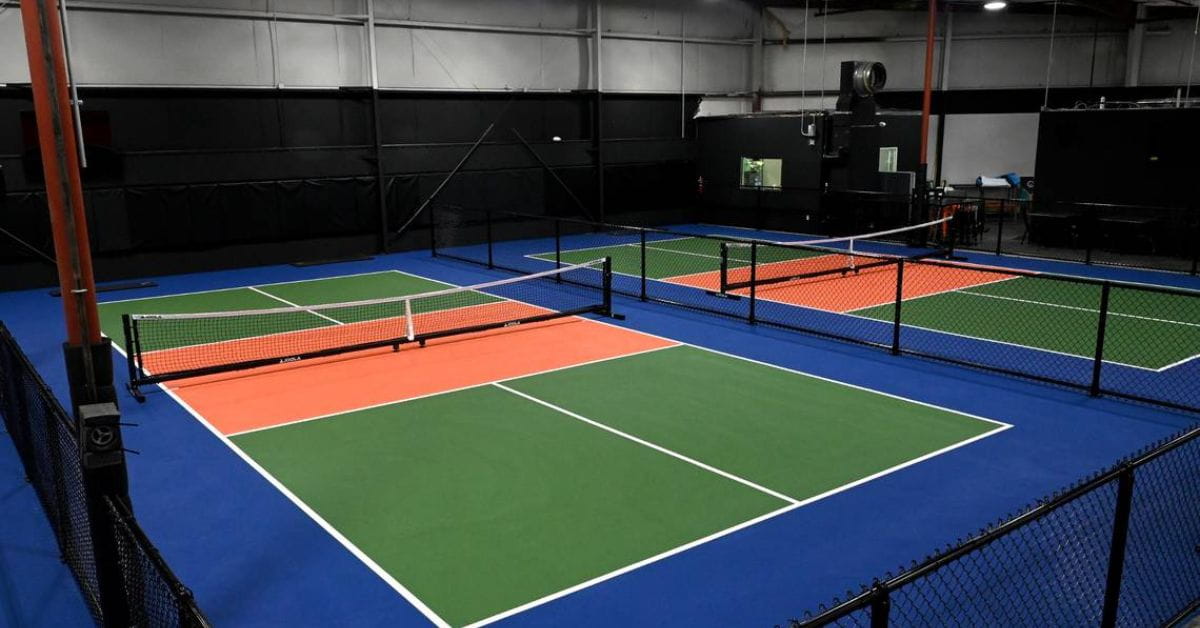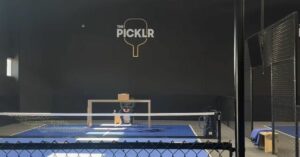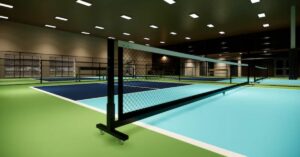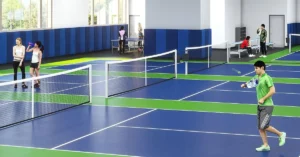One of the reasons behind pickleball’s intense popularity is its capacity to offer diverse and ever-changing gameplay, ensuring that no two matches are alike.
Players witness a blend of accessibility and strategic gameplay on the court and learn to revel in the opportunity to craft their playing styles.
This aspect of pickleball requires split-second decisions and precision, keeps players on their toes, and continually seeks to elevate their game.
The bert in pickleball is one such technique that takes time to master because of the extensive skill set it requires to be executed correctly.
All seasoned players know the best to be audacious and complete, which adds intrigue and excitement to the game.
Quick decision-making and fast maneuvering of the court make the bert a move daring enough to blur the boundaries of a conventional pickleball game by catching opponents off-guard with an oft unreturnable shot.
Today, we discuss the use and consequences of a bert in pickleball. We’ll discuss its role, dissect how to set it up for success, identify common pitfalls to avoid, explore similar high-level techniques, and delve into other factors that make this advanced shot a thrilling addition to any player’s skill set.
What Is a Bert?
A pickleball bert is different from Bert on Sesame Street (though some claim the latter influenced the name of the former, albeit that’s not exactly true).
The bert is a daring power shot involving crossing the court to your partner’s side in doubles and executing a mid-air volley directly off the kitchen line or while in mid-jump that lands you outside the kitchen line.

This advanced technique requires strategically maneuvering the pickleball court to protect a less-prepared teammate targeted by opponents.
It’s natural in a game as strategic as pickleball that players try to study the skills of their opponents thoroughly.
They intend to make the weaker opponent their target for complex moves.
A bert counters their attempt to lure your partner into a fault.
A bert executed with precise decision-making and action acts as an element of surprise in the game. It is a high-risk and high-return shot that, when done right, often results in an unreturnable hit.
What Is Poaching in Pickleball?
Poaching in pickleball involves a player strategically intercepting and hitting a shot intended for their partner. It becomes essential when opponents target a weaker teammate or exploit a tactical advantage.
In the context of a bert shot, you poach your partner’s court and amplify the surprise element of your shot. Poaching for a bert in pickleball is necessary to avoid having opponents take advantage of your partner.
What Is an Erne in Pickleball?
The erne in pickleball is a potent, powerful volley executed mid-air at the corners of the kitchen line or with both feet planted outside the sidelines (yes, you read it right!), ensuring no body part touches the kitchen line.
It is not very different from a bert shot except in one way: the erne does not involve poaching your partner’s court but is executed on or outside the sidelines.
The erne is a perfectly acceptable shot, and nothing in the pickleball rules infers its illegality. Both bert and erne shots are complex, advanced-level techniques, with Bert adding an extra layer of complexity by incorporating strategic poaching towards a partner’s court.
The unique twists of the two shots demand swift and precise timing, elevating the difficulty and excitement of the high-risk maneuvers on the pickleball court.
Naming Origins
The naming origins of bert and erne in pickleball have sparked creative interpretations, with many media articles and blogs playfully associating these shots with the iconic Sesame Street characters, Bert and Ernie. While the association is entertaining, it’s only partially true. The true origin of the names starts from the sport itself.
Interestingly, Bert and Ernie from Sesame Street also have fascinating naming origins. Rumors suggest the cop and cab driver in the 1946 classic “It’s A Wonderful Life!” inspired the writers to name their characters as such because they are partners in some way.
The producers of Sesame Street dismiss these claims, attributing the names to sheer coincidence.
What Are Bert and Erne Named After?
The bert and erne shots are named after Erne Perry, a skilled professional player renowned for mastering these daring maneuvers. Erne’s exceptional execution of the shot led to its association with his name, cementing Erne’s place in pickleball terminology.
The playful association with Sesame Street’s puppets, Bert and Ernie, arises from their roles as counterparts, mirroring the dynamic between the two shots in pickleball. Just as Bert and Ernie are partners, bert and erne shots are also each other’s counterparts in some way.
The bert shot also finds its name rooted in Erne Perry, who used the shot during the 2010 USAPA National Pickleball Tournament and showcased its effectiveness. Perry’s exceptional performance on the court solidifies these names in the lexicon of advanced pickleball techniques.
Setting Up a Bert Shot
Setting up a pickleball bert requires strategic timing. Taking a risky shot requires precision in the hit and maneuvering to your partner’s court quickly and carefully to ensure you stay outside the kitchen line.

Use the bert shot when your opponents target your partner’s weaker skills or repetitively stack shots in a rally at them. Since a bert is quick, it strikes the opponent out of nowhere if they do not anticipate it. This advanced maneuver will throw off their efforts and give them a challenging shot to return.
However, caution is vital, as executing the bert demands advanced skills to avoid touching the kitchen line and committing a fault by volleying in the non-volley zone. Precision and split-second decision-making are critical to hit a successful bert.
Remember that an ill-executed bert in pickleball lands you in a fault by having you volley in the non-volley zone, missing the shot altogether, the ball not crossing the net etc. This makes the bert a high-risk and high-reward advanced pickleball technique.
Playing a Bert
To play a bert, you must watch for your opponent’s mindset to anticipate their strategy and get into action when it’s time. To execute this high-risk shot, players recognize the opportunity − typically when opponents exploit your partner’s weaker skills or bombard them repeatedly with challenging shots – and then respond hastily with a split-second decision.
The pickleball bert is a responsive move whose opening is created when the opponent hits a low shot near the net. You must receive the ball before it bounces on the non-volley zone (kitchen) and must do it without being inside or on the kitchen line.
Court Awareness
Staying prepared for a bert involves constant court awareness. If opponents target your partner, be on the lookout to pounce on the opportunity, positioning yourself strategically to execute the shot.
This requires predicting the opponent’s tactics and understanding when they will set up shots that leave an opening for the bert.
Efficient Maneuvering
To execute a successful bert, you must maintain balance and speed. When the opponent’s shot creates an opening, swiftly cross the court in coordination with your partner.
Anticipate the ball’s trajectory, and time your jump or sidestep to deliver a powerful shot before the ball bounces in the non-volley zone.
Analyze The Risks of The Shot
You must also be acutely aware of the risks associated with the best. Failure to land a perfectly executed bert can cost your points or the entire rally.
Poor execution may lead to faults, commonly touching the kitchen line while hitting the shot or volleying from within the non-volley zone.
The precision required to avoid these faults makes the bert in pickleball a challenging yet rewarding shot.
Time It Perfectly
Mastering the technical aspects of the bert adds a layer of complexity to pickleball, elevating the game for those seeking advanced maneuvers.
With strategic awareness, precise footwork, and quick decision-making, players can make the bert a potent weapon, surprising opponents and gaining a strategic edge on the pickleball court.
Setting Up an Erne

Setting up an erne involves seizing a specific opportunity. When your opponents land a shot close to the net, off-center, and near the sidelines, it’s the perfect moment to unleash your power on a surprise shot.
This shot often catches new players off-guard because their first reaction is doubt over its legality. It requires the players to step outside the bounds of the court to receive a shot.
Pickleball’s erne shot can be executed in two ways: either jump and hit the shot mid-air near the sidelines without touching the kitchen line or plant both feet outside the sidelines parallel to the non-volley zone, extending the paddle to hit the shot from the kitchen without any body part touching the non-volley zone.
The erne shot requires swift reflexes and precise execution, making it a strategic move to capitalize on opponents’ shots and gain an advantage at the net.
How To Play a Bert in Pickleball?
Playing a bert in pickleball requires finesse and coordination. Begin by mentally navigating the court. To do that, you must anticipate your opponent’s moves.
Think about how long it would take to cross the centerline, reach your partner’s court, and react to your opponent’s shot.
A successful bert initiates near the non-volley zone, allowing you to swiftly cross the court, executing the shot on your partner’s side.
You’ll need to move laterally if your initial position is close to the kitchen line. Effective communication with your partner is key, so you must discuss poaching strategies beforehand, ensuring both of you are prepared for the unanticipated move.
Anticipating an opening for pickleball’s bert involves keen observation. Your opponent will hit a shot near the net to throw your partner off-guard.
Seize the moment and use that opportunity. Often, the opponent may hit you with a dink shot to bring your partner near the kitchen line.
Be agile, predict the ball’s trajectory, and time your move precisely to execute the bert.
The Dink Shot
The dink shot in pickleball is a soft, low shot executed close to the net, often utilized to create openings or force opponents out of position.
When your opponent employs the dink, delicately tapping the ball near your partner’s non-volley zone, it creates a prime opportunity for the bert shot.
The slow pace of the dink shot prompts your partner to move and respond, potentially leaving an opening on their side of the court.
Recognizing this moment allows players to capitalize on the opponent’s strategy, swiftly crossing the court to execute the bert with precision and surprise.
The Legality of Bert and Erne Shots
The bert and erne shots in pickleball are legal maneuvers when executed perfectly, although their audacious nature often sparks initial misconceptions about their legality.
The key to their legitimacy lies in the precise adherence to specific guidelines. Both shots are legal as long as the player doesn’t violate the non-volley zone rule, i.e., refrains from touching the kitchen line during the execution of a volley.
The misconception about their legality often arises from the swift movements, leading observers to question the shots’ compliance with the rules.
To clarify, as long as the player executes the bert or erne volleys without breaching the non-volley zone or kitchen line, they remain entirely within the bounds of the game’s regulations.
However, specific movements can render these shots illegal and result in faults. For example, landing on the kitchen line after hitting a volley accidentally or intentionally constitutes a fault.
Understanding the nuanced legality of bert and erne shots is crucial, ensuring players can confidently integrate these advanced maneuvers into their gameplay without fear of rule violations.
Perfecting The Bert Shot
Pickleball is a delightful blend of tennis, badminton, and ping pong, which captivates players with its fast-paced rallies and strategic gameplay. In advanced techniques, the bert shot stands out as a thrilling maneuver that can turn the tide of any match.
Mastering this high-risk shot requires a dedicated approach, regular drills, and practice.
Drills
To perfect the pickleball bert, focused drills are indispensable. Begin with footwork exercises that emphasize swift lateral movements and precise positioning.
Drills simulating real-game scenarios, such as opponents targeting your partner or executing dink shots, enhance strategic awareness and preparation. Incorporating these drills into your routine to hone the muscle memory required for swift execution during gameplay.
Attending Pickleball Clinics
Pickleball clinics offer invaluable insights from seasoned players and coaches. Attending these sessions provides a firsthand understanding of advanced techniques like the bert shots.
Clinics typically include demonstrations, practical sessions, and personalized feedback, accelerating your learning curve. They differ from classes because they help you focus on one skill rather than the entire gameplay.
Clinics are also effective because they allow you to interact with experienced and glean over nuanced strategies to understand the pickleball bert’s tactical applications better.
The collaborative environment of clinics fosters a supportive community, encouraging players to share experiences and tips for mastering these challenging techniques.

Practice Regularly
Consistent practice is essential for any skill, not just pickleball techniques. Dedicate specific practice sessions to focus on bert shots.
Create setups that frequently allow you to use the bert in practice games. Focus on the precision of the shot, the timing of maneuvering the court, and your footwork.
Regularity builds muscle memory and refines your ability to read game situations, enhancing your capacity to identify opportunities.
Practicing with different partners exposes you to diverse playing styles and prepares you to deploy the shots effectively against any opponent.
Remember that a holistic approach yields optimal results in the quest to perfect the pickleball bert. The bert is an advanced technique that elevates your pickleball skill level while adding surprise and complexity to your gameplay’s reputation. Be patient and consistent.
The Pickleball Bert: A Deceptive but Legal Shot
Incorporating the bert shot into your pickleball arsenal adds complexity and an element of surprise to your gameplay.
When executed precisely, this advanced shot can be a game-changer, catching opponents off guard and providing a strategic advantage.
The pickleball bert demands a keen understanding of court dynamics, swift footwork, and split-second decision-making, making it a challenging yet rewarding technique to master.
Remember, the one rule to be vigilant about is ensuring you do not touch the kitchen line during the execution of the shot.
This deceptive shot, born out of opportunity and quick thinking, remains entirely legal when played within the confines of this rule.
Embrace the thrill of the bert, improve your skills through practice and drills, and elevate your pickleball game with this strategic maneuver.





